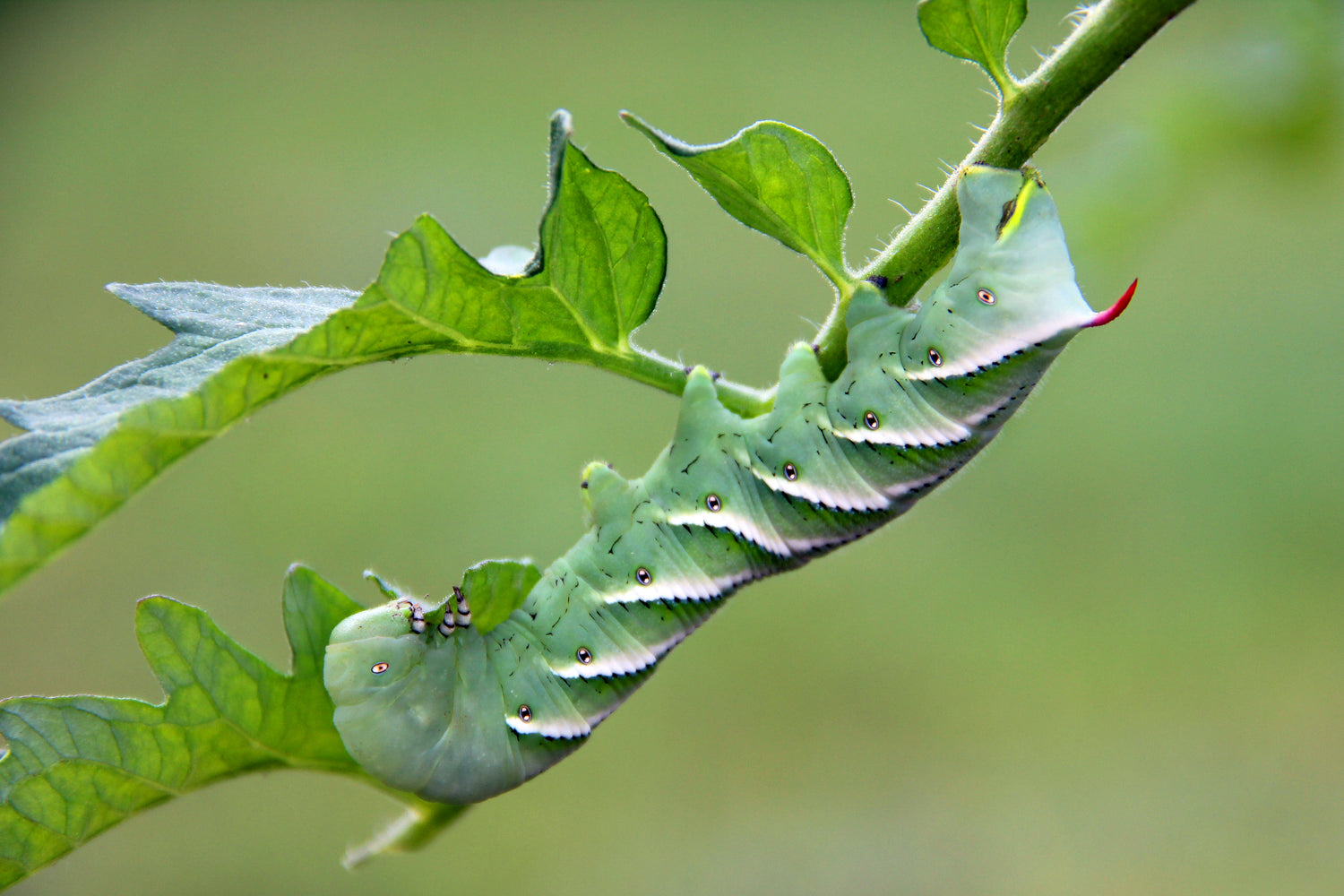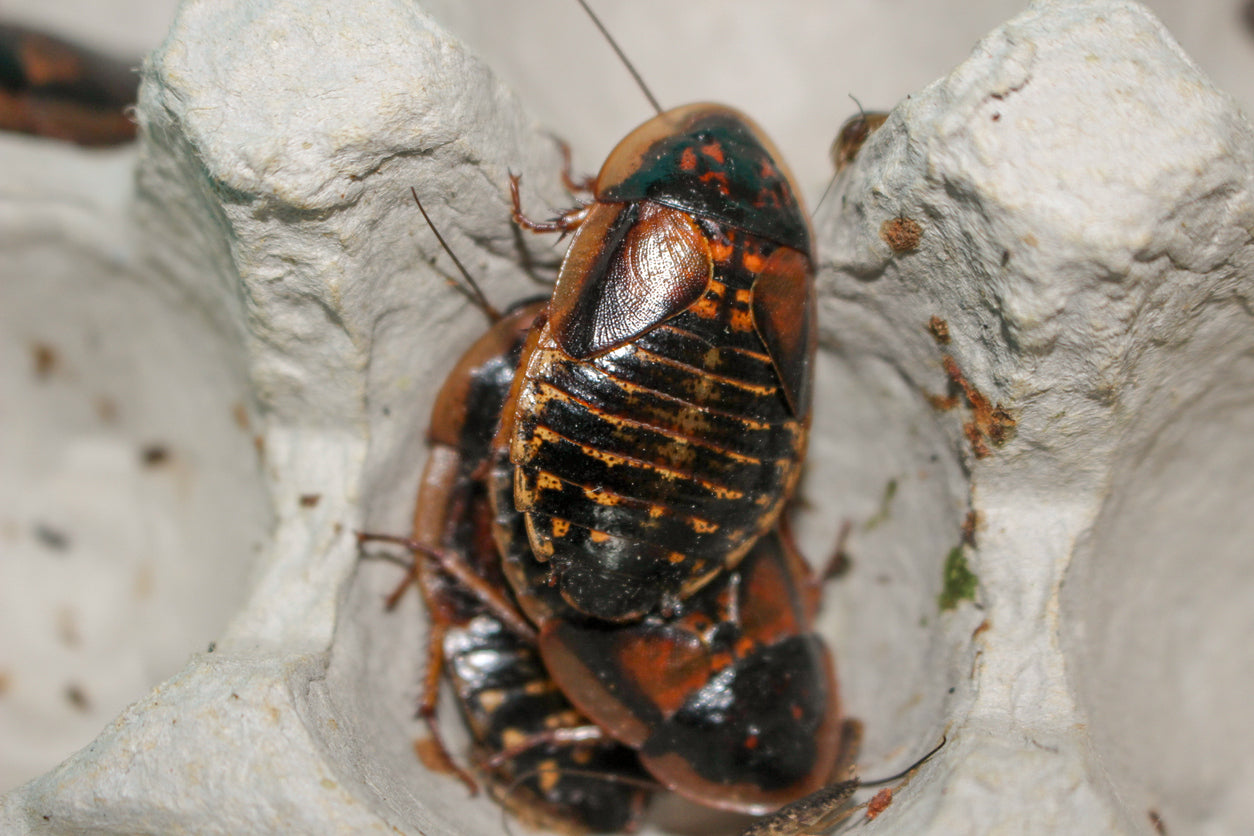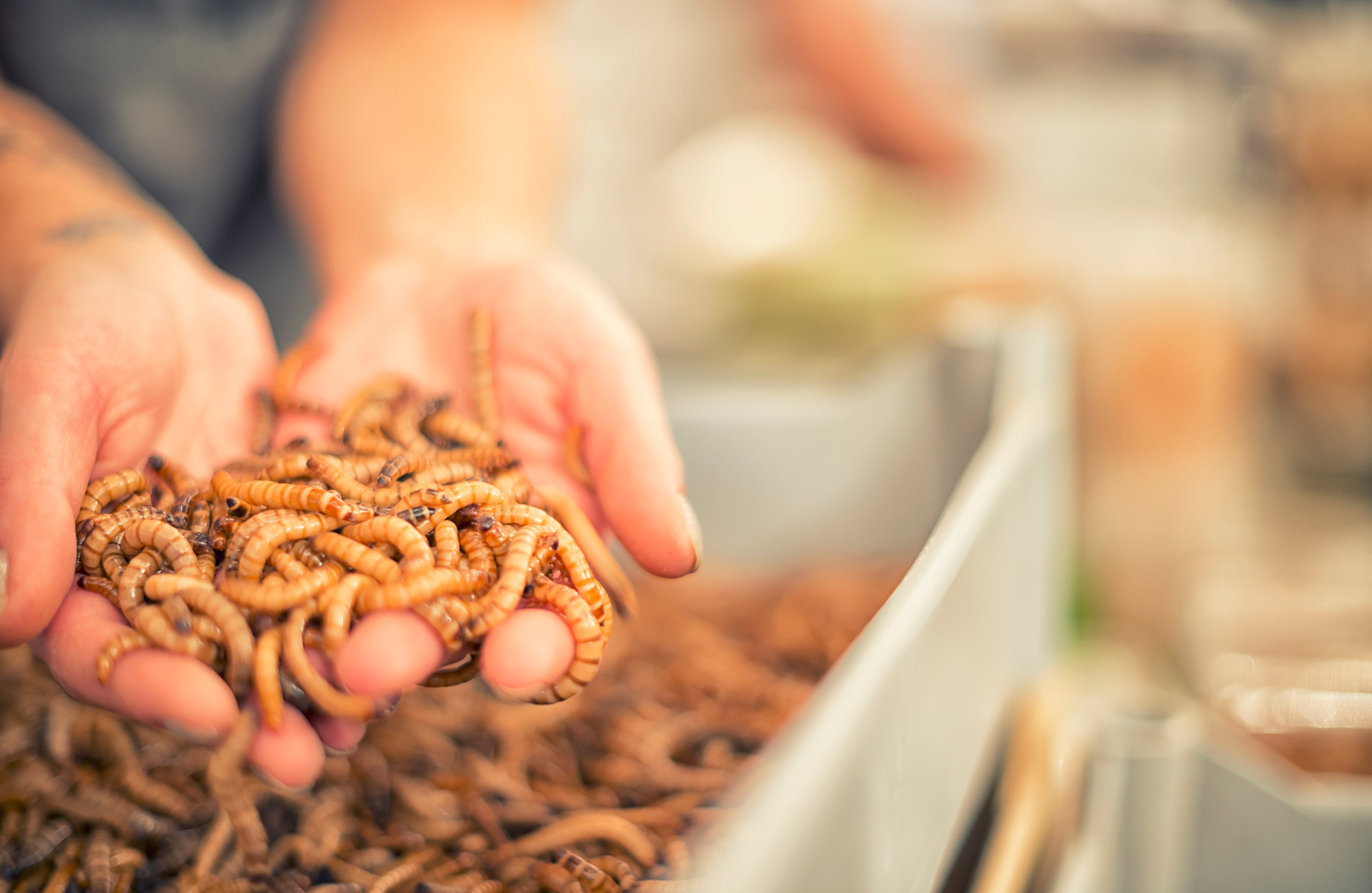Description
Hornworms are a frequent staple or enrichment (treat) food for reptiles and amphibians (Dubia Roaches are a great alternative staple). They are the larval form of moth of the genus Manduca. Most hornworms sold today are either Manduca quinquemaculata commonly known as the “tomato worm” (which metamorphoses into the Hawk moth) or Manduca sexta commonly known as the “tobacco worm” (which metamorphoses into the Sphinx moth)
In nature, hornworms are pale green. They eat the leaves of a variety of plants including those from the deadly nightshade family (of which tomatoes are the most well-known), eggplant, pepper and tobacco, among a few others. Many companies that sell hornworms commercially feed them yellow food, which changes their color to a lovely turquoise or teal, felt to be more attractive to reptiles. They have a set of what resembles eyes that line the side of their bodies which is used as a defense mechanism against potential predators, along with the "horn" from which they got their name which, despite how it looks, is actiually quite soft and not dangerous at all.
Hornworms are generally sold in self-contained food and housing units. These units generally consist of a 32oz. deli cup with a mesh cover, a piece of stiff mesh (commercially sold as “gutter guard”) rising up from the bottom of the cup and a layer of hornworm chow at the bottom of the cup. When storing your hornworms, place the deli cup with the lid at the bottom and the food at the top (put something under the cup to vent it) so the droppings fall to the “bottom” and can be removed by opening the lid.
Hornworm moths are considered an invasive species and should not be released into the wild.
Housing
Although hornworms come with appropriate housing, for those who want to give their hornworms more room to move around, alternative housing can be created on a larger scale. Use a plastic tub and be sure to provide:
--ventilation (cut out a “window” and hot-glue some fine mesh over the opening)
-- a place to climb (staple or glue pieces of gutter guard to the bottom of the tub
-- food (see below): place food at the top of the enclosure (making sure that the gutter guard is tall enough to allow access) so the droppings will fall to the bottom
Hornworms will develop best at 70-80 F. However, they grow quite quickly, reaching sizes of 10-12 grams, or 3-4 inches, and may quickly become too large for small to mid-size reptiles. To retard growth, hornworms can be kept at 55-65 degrees F.
Their containers or housing must be cleaned out of the hornwom poop on a daily basis as they will start to feed on it as it builds up and consequently become sick and not suitable for feeding to your reptile.
**Hornworms should never be kept in the refrigerator since such cool temperatures will kill them**
Food and hydration
Hornworms that will be fed to reptiles should never be fed on tomato leaves or other leaves that are in their natural diet, since many of these leaves are toxic to reptiles and the hornworms will consequently become toxic to reptiles as well. Hornworms are sold with specially formulated hornworm chow, which supplies all their nutritional needs. They are generally sold with the appropriate amount of food to last them until they are fed off; additional chow can be purchased in formulated or powdered form by many companies that sell the worms such as by clicking here ____.
Hornworms receive all necessary hydration from their chow and do not require additional hydration.




Leave a comment
All comments are moderated before being published.
This site is protected by hCaptcha and the hCaptcha Privacy Policy and Terms of Service apply.